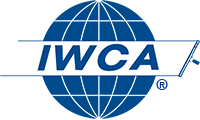May 17, 2017
By Stefan Bright, IWCA Safety Director
Prior to 1991, the use of rope descent equipment for window cleaning and other work at heights applications in the USA was for the most part, considered illegal. This was due to the fact that the equipment was not addressed by any regulatory or standards body. If not for the efforts of 40 or so professional window cleaners and the early founders of the IWCA, OSHA would not have held a public hearing in September, 1990 to determine the feasibility of using rope access equipment for building maintenance, particularly professional window cleaning.
The rest is now history. In 1991, Federal OSHA sent out a memorandum to all field offices in the USA notifying their compliance enforcement team that “descent control devices” (RDS) are a safe and viable means for cleaning windows and other building maintenance. OSHA outlined 8 minimum guidelines to follow when the equipment was being used and notified the affected industries that a final rule would eventually be published.
This document unleashed the use of the equipment and in a few short months, practically every window cleaning company in America was now using rope descent equipment. Regretfully, the number of accidents using this equipment actually increased. Part of the reason for this was the fact that 3 of the 8 guidelines were vague in nature and actually forced window cleaning contractors to “guess” about critical components which were actually out of their control.
Finding a sound anchor for the primary support line and finding a separate sound anchor for the systems backup safety line became an exercise in futility for just about everyone in the high rise window cleaning business. In addition to that, one of the 8 steps denoted the use of proper rigging practices, which till 1991 was a term that had not been used or defined anywhere.
The industry made every effort to remedy this dilemma with the development and approval and publication of an American National Standard for Window Cleaning Safety in 2001, when the IWCA produced the I-14.
This was the first national standard that identified and defined what a sound anchor for a primary support line and independent safety line were to be. It included proper rigging practice suggestions along with anchor placement and inspection and testing criteria. The scope of the Standard was to identify safe window cleaning practices but it actually had a much deeper impact to the industry. It became (and still is) the primary reference source for window cleaners, building maintenance workers, architects, designers, manufacturers and regulatory agencies.
Federal OSHA capitalized on the use of the IWCA I-14.1 2001 Window Cleaning Safety Standard. From 2002 to early 2016, OSHA had been referencing the Standard during the enforcement of window cleaning safety across the country. Additionally, OSHA relied heavily on the I-14.1 Standard to develop the regulations for the use of rope descent equipment in the Final Rule recently published. OSHA held 3 public hearings over a 25 year period to stay up to date with the use of rope descent systems and in November, 2016 the Final Rule on Walking and Working Surfaces and Personal Fall Protection Systems for General Industry, was published.
These regulations were developed for general industry, which includes window cleaning. Professional window cleaners will benefit because these regulations address the following: fall protection on any walking and working surface, the use of portable ladders, rope descent systems (RDS) and their anchorage points and most importantly, the training and re-training of workers in all these areas. These four items are very important topics for window cleaners across the country, and throughout the world.
The rule benefits workers in general industry by providing greater flexibility in choosing a fall protection system. For example, it eliminates the existing mandate to use guardrails as a primary fall protection method and allows employers to choose from accepted fall protection systems they believe will work best in a particular situation — such as guardrails or safety nets or fall restraint or fall arrest systems. In addition, employers will be able to use non-conventional fall protection in certain situations, such as designated areas on low-slope roofs.
It is stated in the official record that OSHA drew many provisions in the regulations from national consensus standards, including the ANSI/IWCA I-14.1-2001, Window Cleaning Safety Standard. OSHA agreed with affected parties that national consensus standards represent industry best practices and reflect advancements in technology, methods, and practices. IWCA recommends the I-14.1-2001 Standard be used as a reference source for architects, manufacturers and window cleaning contractors.
There are several important regulations which include deadlines for compliance. First, professional window cleaning contractors are required to train their workers with identifying and avoiding all fall hazards while on a walking or working surface. Additionally, workers are to be trained in the use, care and inspection of all the equipment outlined in the new regulations. To insure continued safety, workers are to be retrained in these areas on a regular basis. This training is to be accomplished by May 17, 2017.
Secondly, window cleaning contractors using rope descent systems (RDS) are required to obtain written confirmation from a building owner that the anchorage points used for rigging such systems have been identified, tested, certified and maintained so they are capable of supporting 5000lbs in any direction they are loaded per each worker attached. The enforcement of this regulation, which is a shared responsibility between the contractor and building owner, shall begin on November 20, 2017.



